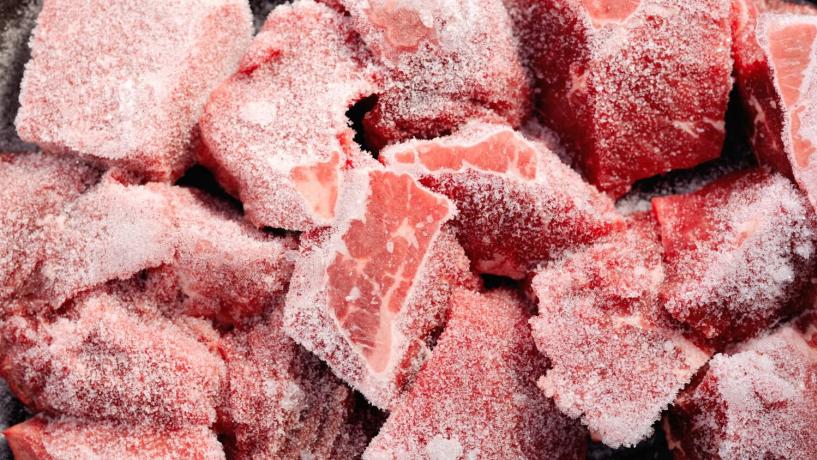
While leaving food out to defrost at room temperature may seem simple, quick and tempting, this method of defrosting poses serious food safety hazards that can cause bacteria growth and lead to food poisoning.
There are four ways in which to defrost food safely - in the refrigerator, in the microwave, as part of the cooking process or under cold running water.
Here’s how to safely defrost food using each method.
1. Defrosting Food In The Refrigerator
The safest way to defrost food is in the refrigerator, as the food will not have to pass through the Temperature Danger Zone (5ºC – 60ºC) where bacteria can easily thrive and multiply.
To defrost food in the refrigerator, ensure that the temperature is below 5°C and that the items being defrosted are placed on the lowest shelves to prevent any drips or splashes from contaminating other foods.
Remember to always plan ahead when you need to defrost a food item because it can take quite a long time to defrost food in a refrigerator! Large items, such as frozen turkeys, can take several days to defrost as you need to allow at least 24 hours for every 2.5kg. Even small items will take at least a full day to defrost.
2. Defrosting Food In The Microwave
If you’re in a pinch, microwave ovens can be quite useful for defrosting small items that will be cooked immediately after defrosting.
Before defrosting, remove the food item from any packaging that is not microwave-safe such as polystyrene trays, plastic wraps and cardboard boxes.
To help prevent cross-contamination in your microwave, place the item in a clean, microwave-safe container to collect any juices that leak out of the food. Cover with a lid, leaving a small gap to allow steam to escape.
Defrost the food item completely before cooking using the defrost setting on the microwave. Remember that heat isn’t distributed evenly through food when using a microwave, so it will be necessary to stir the item during the defrosting process!
3. Defrosting Food As Part of The Cooking Process
Some food items have been designed to be cooked from frozen such as hamburger patties, frozen vegetables and frozen pastry.
This method should only be used for foods designed to be cooked this way. Always follow the manufacturer's instructions and remember to check that the food has reached the safe internal temperature before serving.
4. Defrosting Food Under Cold Running Water
Defrosting food under cold running water is the least recommended method of defrosting as it can be easy for the food item to reach temperatures within the Temperature Danger Zone.
If you must use this method, use a clean and sanitised sink that is large enough to allow the food item to be completely covered by water. Completely submerge the food item under running cold, potable water. The food should be held in leak-proof, waterproof packaging to help prevent cross-contamination. Defrosting must be completed within two hours or less to minimise the time the food may spend within the Temperature Danger Zone.
Even if the food item is wrapped in leak-proof packaging, there is still a chance that bacteria may have gotten on the sink surface, so it’s important to properly clean and sanitise the sink after defrosting food in it.
Always follow proper methods to prevent illness
Freezing food does not kill bacteria, it only stops bacteria from growing. As food thaws, bacteria can reawaken and start to reproduce. That’s why it’s so crucial to defrost food properly to help ensure bacteria does not continue to grow and cause food poisoning.
Never defrost food at room temperature — this means no defrosting of food on kitchen workbenches or other surfaces. Also ensure that food is fully defrosted before cooking, unless otherwise stated in the packaging that the food item is designed to be cooked from frozen.
Properly defrosting food is an important step in food safety — especially if you work in a food business. It’s a Food Handler’s responsibility to understand the food safety hazards related to their job, ensure all steps are taken to help prevent food-borne illness and be properly trained in food safety.
To gain comprehensive training in how to safely receive, store, prepare, cook and serve food, enrol in the Australian Institute of Food Safety’s nationally recognised Food Handler Course.





